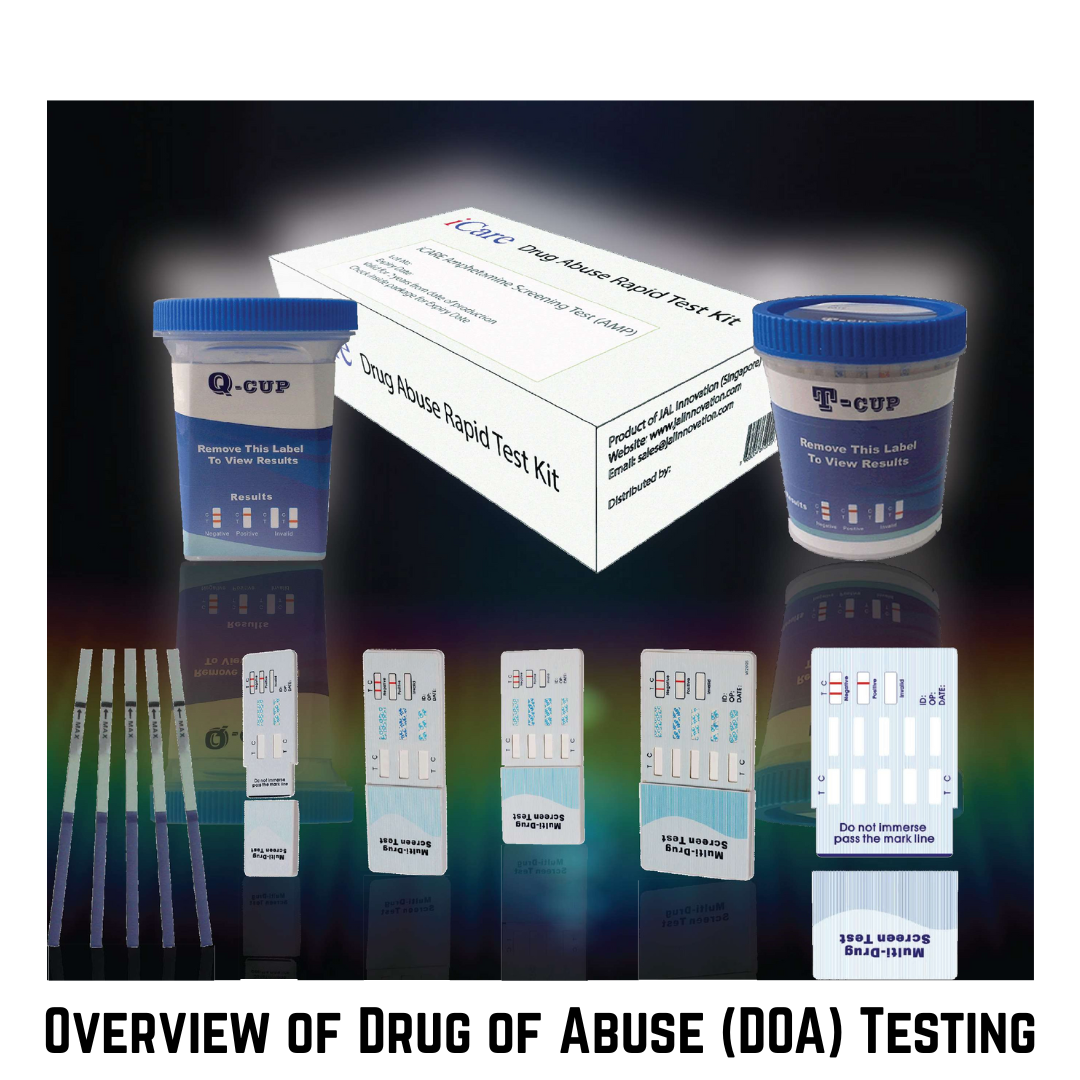Table of Contents
The growing global concern over substance misuse has heightened the importance of reliable, rapid and accessible testing solutions. A drug abuse screening test – commonly referred to as a DOA test – is a fast and effective way to identify the presence of drugs or their metabolites in biological samples. These tests play a critical role in healthcare, employment, law enforcement, rehabilitation and public safety.
With innovations like the Drug of Abuse Rapid Screen Test Kit both professionals and individuals can now screen for substance use accurately and efficiently. This FAQ-style guide provides deep insight into drug use screening, highlighting how these tools function, where they’re used and why they matter.

What is a Drug Abuse Screening Test and how does it work?
A drug abuse screening test is a diagnostic method used to detect specific drugs or their metabolites in biological specimens such as urine, saliva or blood. The test works on immunoassay principles, where antibodies on a test strip react with target drugs in the sample, producing visible lines that indicate positive or negative results.
Most tests – including the DOA test kit – can detect a range of substances such as marijuana, opioids, cocaine, benzodiazepines, methamphetamines and more. When configured as a DOA multi drug test, a single kit can screen for several substances simultaneously, making it ideal for clinical, forensic or workplace settings.
What are the sample types used in DOA screening tests?
Drug of Abuse test kits are highly adaptable and compatible with various biological samples, depending on the setting and detection needs:
- Urine: Commonly used in DOA urine screening tests for its ease of collection and extended detection window.
- Saliva: Favored for its non-invasive nature and fast turnaround in DOA saliva test kits.
- Blood: Provides accurate real-time drug levels but requires clinical oversight.
- Hair (less common): Offers a long detection window (up to 90 days), often used in legal contexts.
- Sweat: Used in some extended monitoring scenarios.
Each test type has its own advantages, but urine and saliva remain the most widely used for rapid and point-of-care testing.

How accurate is the Drug of Abuse Rapid Screen Test Kit?
Modern Drug of Abuse Rapid Screen Test Kits are highly reliable when used correctly. Accuracy varies slightly depending on drug type, sample quality and timing, but general performance includes:
- Sensitivity: 90–99%
- Specificity: 95–99%
- Cut-off levels: Set thresholds to balance sensitivity with reducing false positives.
These tests are designed to detect drug use within specific windows – often hours to days after consumption. For legal or disciplinary action, positive results from a drug abuse screening test should always be confirmed through advanced laboratory methods like GC-MS or LC-MS.
Where are DOA test kits commonly used?
The DOA screening test has widespread applications in both public and private sectors:
- Hospitals and clinics: For emergency room cases or psychiatric evaluation.
- Workplaces: Pre-employment, random or post-incident drug screening.
- Rehabilitation centers: Monitoring patient compliance during treatment.
- Schools and universities: Early detection programs for students.
- Judicial and correctional systems: Monitoring individuals on probation or parole.
- Military and law enforcement: Ensuring readiness and safety standards.
Their versatility and fast results make them suitable for almost any environment where substance use needs to be monitored.
What does a DOA multi drug test detect?
A DOA multi drug test is a comprehensive panel that can detect multiple drug classes in a single test. Commonly screened substances include:
- THC (Cannabis/Marijuana)
- COC (Cocaine)
- OPI (Opiates: Heroin, Morphine)
- AMP/MAMP (Amphetamines/Methamphetamines)
- BZO (Benzodiazepines)
- BAR (Barbiturates)
- MDMA (Ecstasy)
- PCP (Phencyclidine)
- MTD (Methadone)
- FYL (Fentanyl) (in extended panels)
These panels make DOA test kits highly efficient for mass screenings or environments where a broad spectrum of drug abuse is suspected.
How do different countries regulate drug abuse screening tests?
The drug abuse test industry is regulated differently across nations:
- United States (FDA): DOA kits must comply with FDA guidelines for medical devices.
- European Union (CE Mark): Indicates compliance with EU health and safety standards.
- Australia (TGA): Reviews for both over-the-counter and clinical-grade test kits.
- WHO: Offers prequalification for use in global health settings or NGO programs.
This ensures that the drug abuse screening test meets quality benchmarks no matter the geography.
Can DOA saliva tests be used in non-medical environments?
Yes, DOA saliva tests are well-suited for use outside clinical settings. Their main advantages include:
- Non-invasive sample collection
- Lower risk of sample adulteration
- Quick results (as fast as 5–10 minutes)
- Minimal biohazard concerns
These benefits make them ideal for workplaces, schools, transportation companies and even at-home testing when conducted by trained personnel.
Are drug abuse test kits useful in public health and prevention programs?
Absolutely. Drug abuse screening tests are a valuable asset in:
- Harm reduction strategies
- Community health initiatives
- School awareness programs
- Rehabilitation follow-ups
- Outreach in underserved populations
Quick identification of substance use through drug use screening enables timely interventions, counseling and referrals to treatment, ultimately saving lives and improving public health outcomes.
What are the limitations of DOA test kits?
While powerful tools, Drug of Abuse Test Kits have limitations:
- Short detection windows for some drugs
- False positives or negatives due to cross-reactivity or poor sample handling
- No indication of dosage or frequency – they detect presence, not quantity
- Confirmation needed for legal or employment consequences
Despite this, they remain the frontline defense against unchecked substance abuse across various sectors.
Can individuals use DOA test kits at home?
Some drug abuse test kits are available for home or self-testing, particularly urine-based versions. However, results should be interpreted cautiously and positive tests should be followed up with clinical or lab confirmation.
Self-testing may help with:
- Personal health awareness
- Monitoring loved ones
- Compliance in recovery programs
Still, it is important to respect privacy laws and ethical use when employing drug abuse screening tests outside professional settings.
Conclusion
As substance abuse continues to affect societies globally, tools have become vital to detection and prevention efforts. These diagnostics offer quick, accurate and actionable insights across clinical, occupational, legal and personal applications.
Whether for routine screening, rehabilitation support or emergency response, the drug abuse screening test remains an indispensable part of modern health and safety systems. As the technology evolves, these kits will continue to serve as an essential bridge between early detection and life-saving interventions.







